 Smack-dab in the middle of Chopin’s Op. 25 Etudes lies this unique and memorable piece that is unlike any other Chopin creation. And one that has generated a considerable amount of ink over the decades.
Smack-dab in the middle of Chopin’s Op. 25 Etudes lies this unique and memorable piece that is unlike any other Chopin creation. And one that has generated a considerable amount of ink over the decades.
Sometimes it’s called the “‘cello Etude,” due to the fact that the prominent melody is in the left hand, approximating the range of a cello. Others have called it “A Duet between a He and a She.” Or perhaps you prefer “Morbidly Elegaic?” Ballade-like? A Missing Nocturne?
Another school of thought says plainly: It’s an Etude. It’s supposed to help you with perfecting you piano technique. And the technique here is an exquisitely difficult phrasing and balance question – making the left hand carry the melody without being overpowered by the right — when the natural tendency is to go the other way.
Oh, and just to mess you up a little further, the left and right hand are playing quite independent musical lines that need to coincide at key moments.
So, for the final word, let’s transport you back to G.C. Ashton Jonson, author of the 1905 tome A Handbook to Chopin’s Works: (For the Use of Concert-Goers, Pianists, and Pianola Players):
 Click on the piano to hear Chopin Project Artistic Director Arthur Greene perform Chopin’s unique Etude in C-sharp Minor, Op. 25, No. 7.
Click on the piano to hear Chopin Project Artistic Director Arthur Greene perform Chopin’s unique Etude in C-sharp Minor, Op. 25, No. 7.
Read the Wikipedia entry here.
Read the Chopinmusic.net entry here.
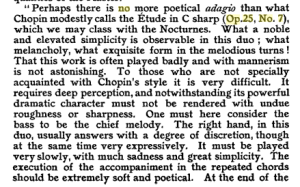
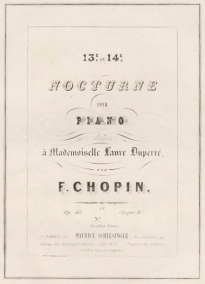




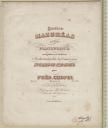







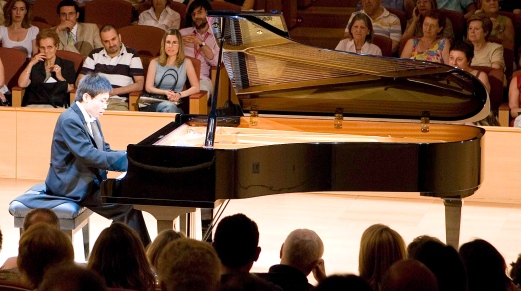

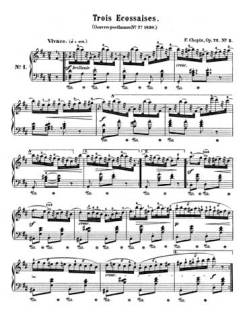
You must be logged in to post a comment.